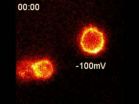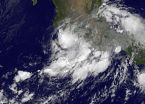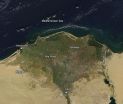Studies have shown that breast cancer patients treated with radiation therapy have improved local-regional recurrence, and breast cancer-specific survival after breast-conserving surgery and overall survival (OS) after mastectomy. Long-term follow-up of historic radiation therapy trials for breast cancer has demonstrated a potential increase in cardiac mortality. However, these studies used earlier modes of radiation therapy including Cobalt and orthovoltage radiotherapy, and did not employ CT-based planning, which allows for greater cardiac avoidance. Three recent studies suggest that cardiac mortality has not been greater for patients treated for left-sided breast cancer since the 1980s, when techniques allowing for greater cardiac avoidance became more commonplace[1-3].
This study, "Breast Cancer Laterality Does Not Influence Survival in a Large Modern Cohort: Implications for Radiation-Related Cardiac Mortality," examines the impact of tumor laterality on overall survival in a modern cohort of patients from the National Cancer Database (NCDB). The NCDB, a joint project of the Commission on Cancer of the American College of Surgeons and the American Cancer Society, contains deidentified data from approximately 70 percent of newly diagnosed cancers in the United States. The NCBD is more than two times larger than the Surveillance, Epidemiology and End Results (SEER) database, and the NCBD contains data not found in SEER, including histopathologic data and specific treatment information such as sequencing of therapies, dose, technique (e.g., intensity modulated radiation therapy vs. brachytherapy) and target (e.g., breast only vs. breast and regional nodes). This study analyzed 344,831 patients diagnosed with breast cancer between 1998 and 2006. All patients had a diagnosis of ductal carcinoma in situ (DCIS) or invasive carcinoma of any histologic subtype, and received external beam radiation therapy after breast-conserving surgery. Patients without tumor laterality or with bilateral disease were not included in the study. Left breast tumors were present in 50.7 percent (174,956) of patients, and 49.3 percent (169,875) had tumors in the right breast. The median follow-up time for all patients was 6.04 years, and subset analyses were performed in patients with extended follow-up of 10 years or more.
Of the patients included in the study, 41,646 (12.1 percent) had DCIS and 303,185 (87.9 percent) had invasive carcinoma. Invasive histologic subtypes included ductal (79.3 percent, n=240,352); lobular (7.2 percent, n=21,908); mixed (6.4 percent, n=19,431); and missing or "not specified" (7.1 percent, n=21,494). Fifty-seven percent (96,829) of right-sided patients and 56 percent (97,975) of left-sided patients received chemotherapy, of which a majority were multiagent regimens (68.5 percent and 70.8 percent, respectively). Additionally, 59 percent (100,226) of right-sided patients and 58.5 percent (102,349) of left-sided patients received endocrine therapy. The median whole breast radiation dose was 50.4 Gy in patients with DCIS, and 81 percent (33,733) of those patients received a boost to a median dose of 10 Gy. Of the patients with invasive disease, 85 percent (257,707) were treated with radiation therapy to the breast only with a median dose of 50.4 Gy. A boost was given to a median dose of 12 Gy to 85.8 percent (221,112) of patients treated to the breast only.
Overall survival (OS) did not differ based on tumor laterality in all patients when a Kaplan-Meier survival analysis was completed. At five years, overall survival was 92 percent in both left- and right-sided groups, and at 10 years, overall survival was 78 percent in both groups (p=.132). A multivariate analysis with Cox regression was performed to adjust for demographic and pathologic factors that could impact OS, including age, grade, estrogen receptor status, tumor size, number of positive nodes, receipt of chemotherapy and receipt of endocrine therapy. The multivariate analysis showed no difference in OS by tumor laterality (Hazard Ratio 1.002, 95 percent Confidence Interval, p=.874).
"The delivery of radiation therapy for breast cancer is markedly different today than it was several decades ago when the association between breast radiation, cardiac disease and cardiac death was observed. Treatment planning and more advanced treatment techniques and technologies have reduced the risk to the heart," said Charles E. Rutter, MD, lead author of the study and a fourth-year resident in the Department of Therapeutic Radiology at Yale School of Medicine in New Haven, Connecticut. "This study demonstrates that the advances in breast radiation oncology have made treatment safer, and should reduce patients' fears of cardiac risk and impact on their overall health after they complete their cancer treatment."
INFORMATION:
For a copy of the study manuscript, contact ASTRO's Press Office at press@astro.org. For more information about the Red Journal, visit http://www.redjournal.org.
1 Darby SC, McGale P, Taylor CW, et al. Long-term mortality from heart disease and lung cancer after radiotherapy for early breast cancer: prospective cohort study of about 300,000 women in US SEER cancer registries. Lancet Oncol 2005;6:557-565.
2 Giordano SH, Kuo YF, Freeman JL, et al. Risk of cardiac death after adjuvant radiotherapy for breast cancer. J Natl Cancer Inst 2005;97: 419-424.
3 Hooning MJ, Botma A, Alerman BM, et al. Long-term risk of cardiovascular disease in 10-year survivors of breast cancer. J Natl Cancer Inst 2007;99:365-375.
About ASTRO
ASTRO is the premier radiation oncology society in the world, with more than 10,000 members who are physicians, nurses, biologists, physicists, radiation therapists, dosimetrists and other health care professionals that specialize in treating patients with radiation therapies. As the leading organization in radiation oncology, the Society is dedicated to improving patient care through professional education and training, support for clinical practice and health policy standards, advancement of science and research, and advocacy. ASTRO publishes two medical journals, International Journal of Radiation Oncology • Biology • Physics and Practical Radiation Oncology; developed and maintains an extensive patient website, http://www.rtanswers.org; and created the Radiation Oncology Institute, a non-profit foundation to support research and education efforts around the world that enhance and confirm the critical role of radiation therapy in improving cancer treatment. To learn more about ASTRO, visit http://www.astro.org.






